On a sunny, 73-degree day in June, I took the Hampton Jitney from Manhattan to a stop in the North Fork of Long Island called Peconic. Across the street from the bus stop, a large black van waited with a suit- and sunglasses-wearing driver. The van would take me, and a small group of other food and beverage enthusiasts, to pick fresh strawberries, drink locally made rosé, and taste Cabernet-infused chocolates.
This sounds like a luxury service—and it is luxurious to have a roomy, air-conditioned van drive you to various wining and dining destinations away from the city during New York’s suffocating summer months—but riding the North Fork Link is free. A new service launching July 7 to take visitors around the North Fork of Long Island, the Link gets its funding from a New York Sate Empire State Department grant aimed at decreasing traffic during a time of the year when city-dwellers want to escape the confines of their apartments and hot, city pavement to explore the breezier, bucolic east.
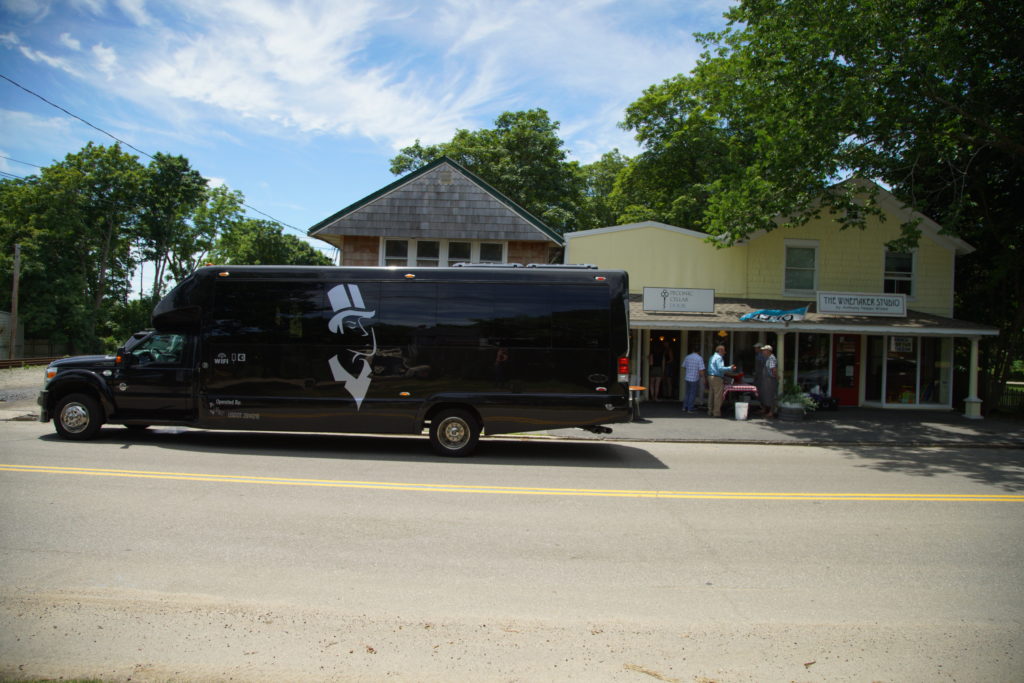
While most are familiar with the South Fork of Long Island, home to the flashy Hamptons where the outrageously wealthy (like David Koch of the infamously influential Koch brothers) “summer,” the northern part of the island rarely gets its time in the spotlight. Last August however, Vogue suggested Hamptons-bound travelers take the “road less traveled” by heading North instead of South to find a locale rich in farm stands and vineyards. The quiet towns that I visited last week on the North Fork offered both, scattered among modest residences with plastic, children’s playgrounds in their yards, hand-painted signs advertising “fresh duck eggs,” and roofs covered in solar panels—a welcome contrast to the Hamptons’ gated mansions and overpriced breakfast chains where omelets are named after hedge funds.
Our first stop on the North Fork Link was Sang Lee Farms. The third generation family farm had started off growing Asian vegetables and selling them to Chinatown markets on the East Coast. Once a profitable business, selling vegetables has become a difficult one to sustain, so Sang Lee started to branch out. Now, the farm offers CSA (Community Supported Agriculture) shares, operates three farmers’ markets, and features an on-location farmstand that sells, in addition to a variety of fresh-smelling herbs, mouth-watering homemade hummus and ginger scallion dip. You can learn how to make these items yourself by visiting the farm’s weekend cooking demos.
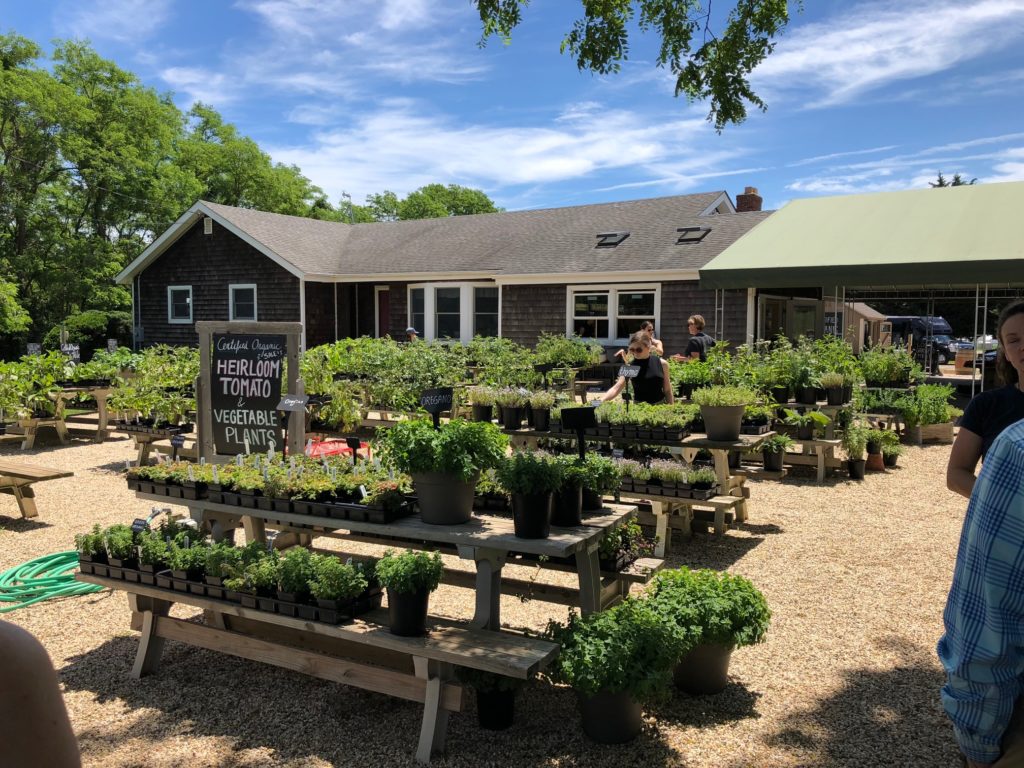
At Sang Lee, I learned two, key facts about produce (as it pertains to my gastronomic enjoyment). One) Raw baby bok choy makes for an ideal hummus-dipping vehicle (consider the vegetable’s refreshing, crisp crunch paired with its spoon-like stalk). Two) Newly picked strawberries are nothing like what you’ll find in a grocery store. The certified-organic farm offers strawberry picking in their patch as part of a group tour. (For more information about Sang Lee Farms, visit its website.)

After spending a morning in the sun, it was time for a cooler atmosphere. The Peconic Cellar Door, which houses wine by makers Alie Shaper and Robin Epperson-McCarthy, provides just that. With a calming, white interior shelved with an array of reds, whites, and rosés made by the two women, the Peconic Cellar Door wants to educate its visitors. Accordingly, Epperson-McCarthy explained how either she or Shaper are always around to talk wine with their guests before she began elaborating on the process she employs for her own brand, Saltbird Cellars.

“Long Island rosé is a thing,” Epperson-McCarthy said as we tasted Haywater Cove Rosé, one of Shaper’s Brooklyn Oenology blends made from Cabernet Franc and Merlot grapes grown in North Fork vineyards. We enjoyed our wine with briny oysters quintessential to the northeast coast and shucked just outdoors by Benigno Gonzalez and Dave Daly of Southold Bay Oysters. After the rosé, we tried a zingy white and a dry Merlot. “All of our wines are pretty dry because we’re pretty dry,” said Epperson-McCarthy. (To learn more about Peconic Cellar Door, and discover Shaper’s other brand, As If Wines, visit their website.)
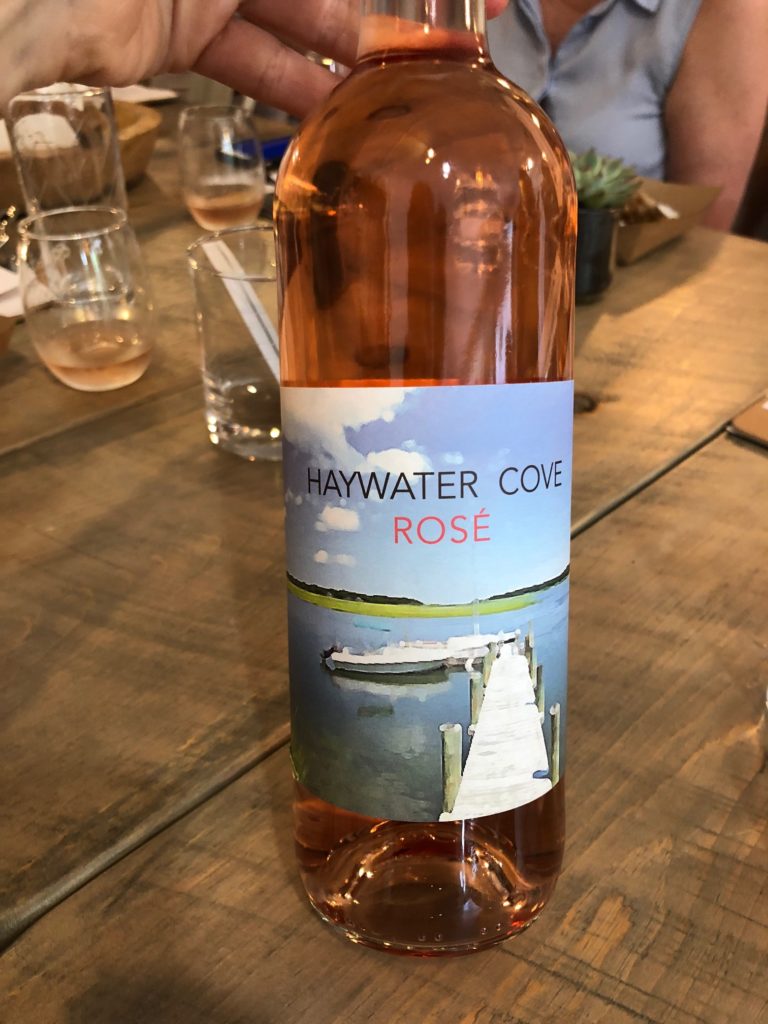
From an oyster and wine pairing, the next logical step put us on the path toward chocolate consumption. In a quaint shop that houses the wares of a handful of local artisans, from the creators of alpaca socks to pumpkin brittle, you have to walk all the way to back to encounter a glass case holding rows upon rows of intricate, bite-sized chocolates crafted by James Beard nominated Chef Steve Amaral.
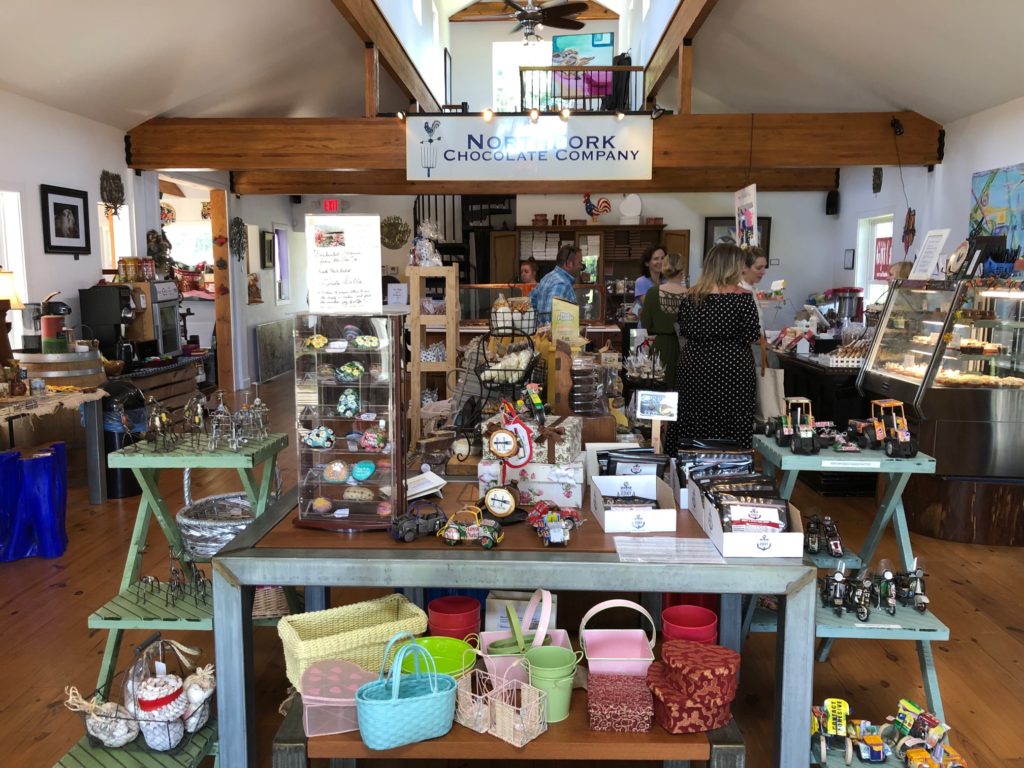
The North Fork Chocolate Company’s resident chef, Amaral derives inspiration from Asian flavors to create mouth-watering delights like the Thai Iced Coffee, a dark, milk, and white chocolate mixed treat infused with dark roast coffee and sweet cream. Meanwhile, the Umami blends togarashi (a type of spicy, red pepper flake) with toasted hempseed to create an unexpectedly pleasing genre-bending dessert, and multiple chocolates rely on local liquor (such as Long Island Spirits’ Rough Rider Bourbon) for their sharp but warm flavors.

A multi-purpose shop, the North Fork Chocolate Company also hosts both “gentle” and “vigorous” yoga classes as well as weekend chocolate fountain waffle bars and even a makeshift gallery (in the same room where visitors can stretch into downward dog). I left resisting the urge to buy a pair of alpaca socks and a chocolate-covered marshmallow stick. (For additional chocolate porn, visit the North Fork Chocolate Company’s website.)
After a delightful but long day, it was time to wind down. Drinking flavored vodka on a balcony overlooking the potato farms where the liquor originated would do the trick. The first distillery on the island, LIV Spirits offers a variety of vodka flavors, three infused with local fruits including strawberry, raspberry, and watermelon. The strawberry vodka tastes just like jam, but it’s the rich espresso flavor potato-based spirit that’s not to be missed.
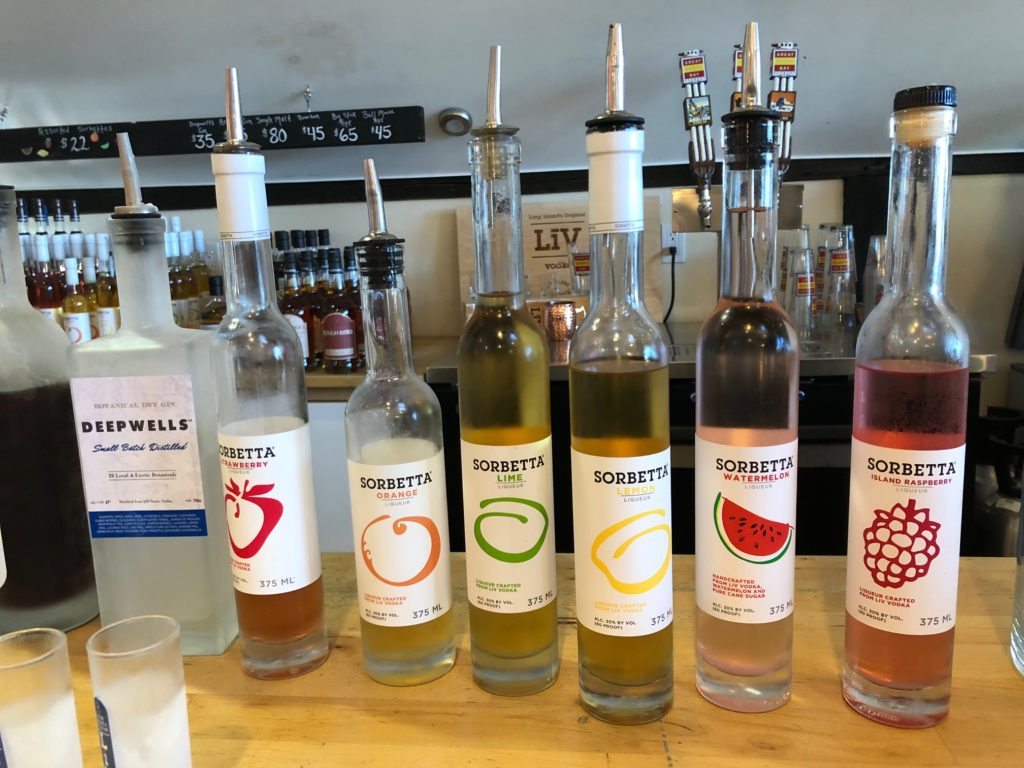
Standing on LIV’s rustic, wooden balcony with a nearly empty shot glass of Ristretto Espresso Vodka, I listened to August Ruckdeschel, economic development specialist, Agriculture & Marine, tell me how he used to come to the distillery to toss a football around with friends among the potatoes. “This is still my favorite picture of myself,” he held up a shot on his phone of him mid-throw, poised for the football to arc up and over the balcony from the field below. Looking out at the clear blue sky, then down at the spot where August had been standing in the picture, I savored my last sip of the distillery’s unique, coffee-flavored blend. (You can learn more about the distillery and their products here.)

On the ride back to the Jitney, we snacked on strawberries and snap peas from Sang Lee Farms while driving past car dealerships, Wendy’s, and laundromats—the mark of a place where people live year-round and not just during the pleasurable summer months. Perhaps that’s why all the produce, shellfish, chocolate, and wine tasted so good. People’s lives were dedicated to their delicious creations. I’d take it all over a “hedge fund omelet” in the Hamptons any day.
Other stops on the Link that we didn’t explore include downtown Riverhead, which houses the Long Island Aquarium (pair that with strawberry picking at Sang Lee Farms for a more family friendly excursion) and a variety of lodging options, like Hotel Indigo, The Duncan Inn, and Cedar House on Sound B&B if you want to stay the night.
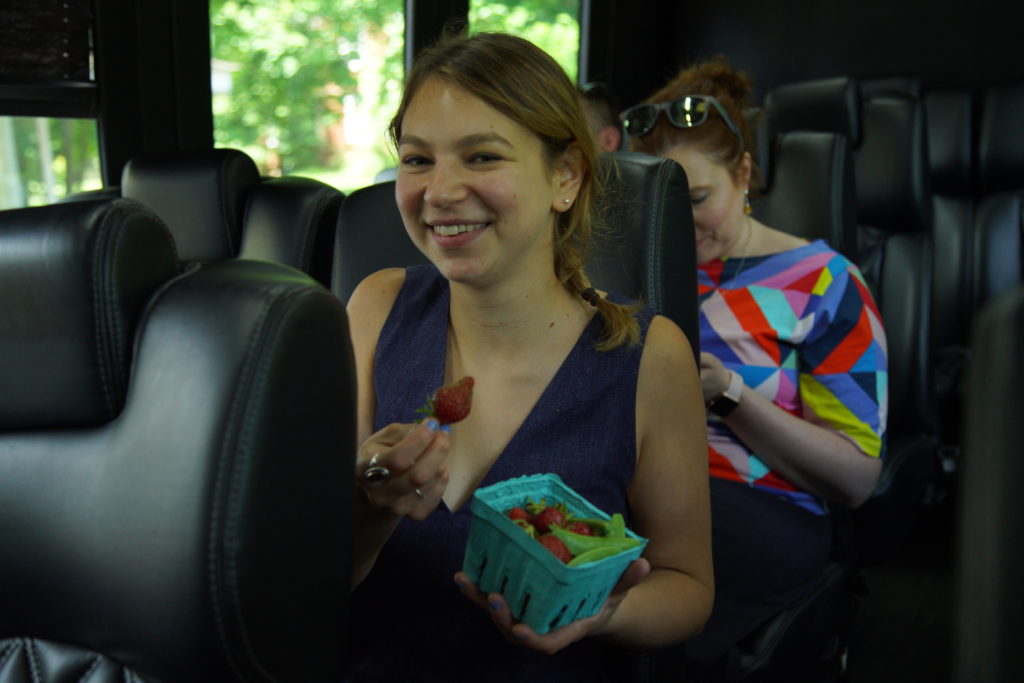
North Fork Link will begin operation on Saturday, July 7 and run for free from 11am – 7pm every Saturday through August 25. Vans will run on a 30 to 45-minute schedule and pick up passengers at the Riverhead and Mattituck LIRR stations. (Pro tip: If you’re taking the Jitney instead of the LIRR, always book your ticket in advance—the bus fills up quickly and tickets cost $3 less if booked beforehand. Also, the Jitney offers water and some snacks.) For more information about the North Fork Link, visit the website.
